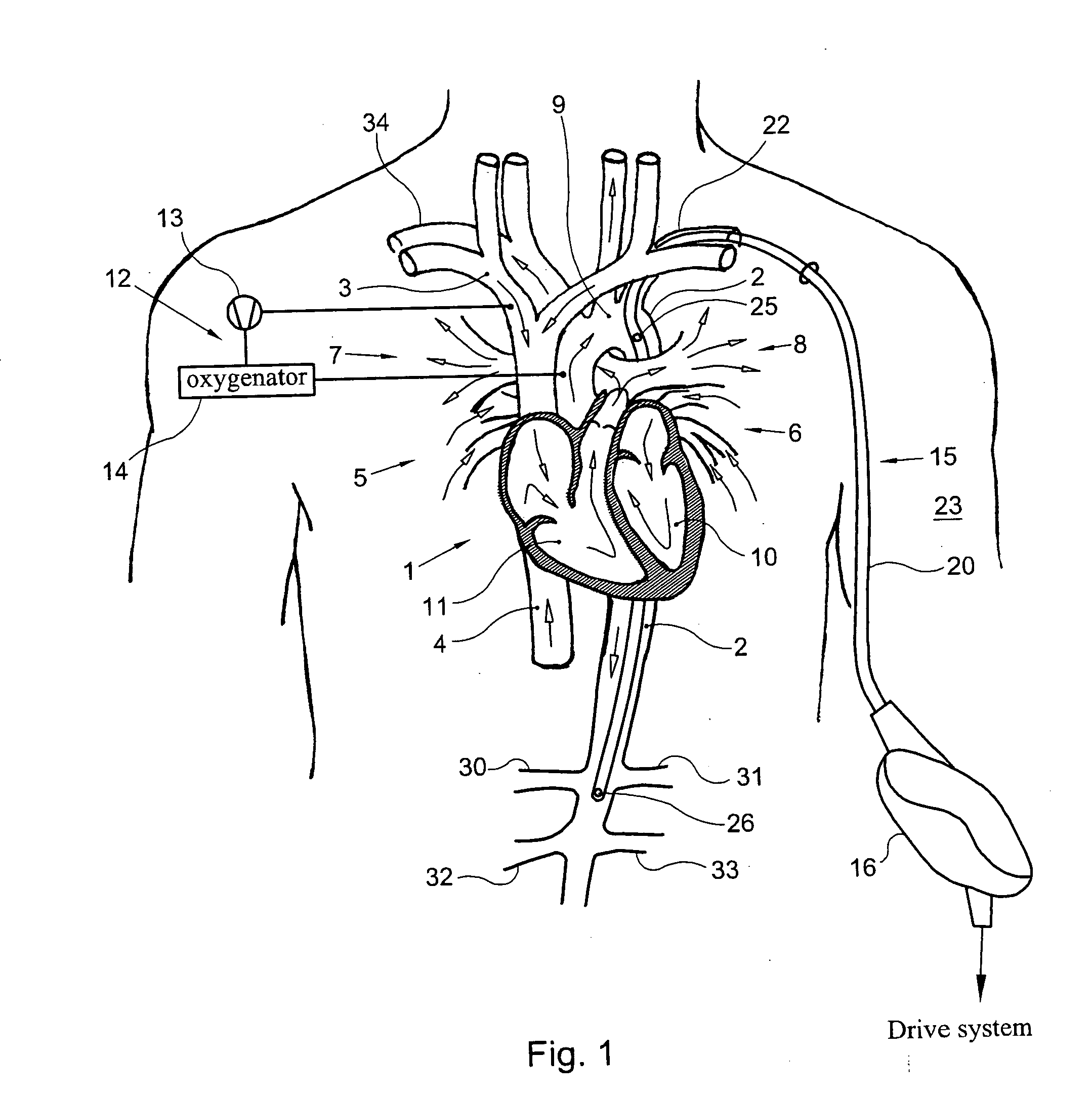Catheter pump, catheter and fittings therefore and methods of using a catheter pump
a catheter and pump technology, applied in the direction of catheters, blood pumps, therapy, etc., can solve the problems of increasing the risk of thrombosis, and the solution is still relatively complex, so as to achieve simple and reliable, the effect of at least reducing the risk of blood damage and thrombosis
- Summary
- Abstract
- Description
- Claims
- Application Information
AI Technical Summary
Benefits of technology
Problems solved by technology
Method used
Image
Examples
Embodiment Construction
[0034] In FIG. 1 a human thorax is illustrated in a view showing the heart 1, the aorta 2, the superior vena cava 3, the inferior vena cava 4, the right pulmonary veins 5, the left pulmonary veins 6, right pulmonary arteries 7, the left pulmonary arteries 8, the aortic arch 9, the left ventricle 10 and the right ventricle 11. Arrows indicate blood flow directions when the heart 1 is in operation. During open-heart surgery on an inactive heart 1, in practice, blood circulation is usually maintained using a heart lung machine 12 (shown schematically only) including a pump 13 and an oxygenator 14. The heart lung machine is connected to the human body for pumping blood from the vena cava 3 to the aorta 2 and maintains the blood circulation in the patient. The blood flow from the heart lung machine 13 to the patient is essentially non-pulsatile. This essentially non-pulsatile blood flow enters the aorta 2 closely adjacent the heart 1, which has been deactivated. The pump 13 is a non-puls...
PUM
 Login to View More
Login to View More Abstract
Description
Claims
Application Information
 Login to View More
Login to View More - R&D
- Intellectual Property
- Life Sciences
- Materials
- Tech Scout
- Unparalleled Data Quality
- Higher Quality Content
- 60% Fewer Hallucinations
Browse by: Latest US Patents, China's latest patents, Technical Efficacy Thesaurus, Application Domain, Technology Topic, Popular Technical Reports.
© 2025 PatSnap. All rights reserved.Legal|Privacy policy|Modern Slavery Act Transparency Statement|Sitemap|About US| Contact US: help@patsnap.com



